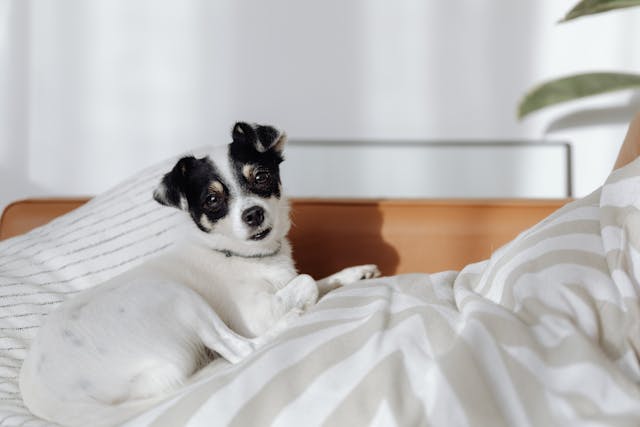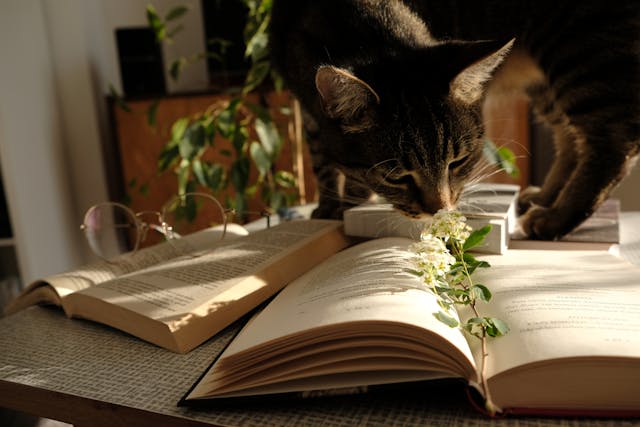Pet-Proofing Your Home: Safety Tips for New Owners
Bringing a new pet into your home is exciting, but it also comes with responsibilities. Just like baby-proofing for a child, pet-proofing ensures your furry friend stays safe in their new environment. Pets are naturally curious and can get into trouble if precautions aren’t taken. Here’s a guide to making your home a pet-friendly and hazard-free space.

Secure Toxic Household Items
Many common household products can be harmful or even deadly to pets. Cleaning supplies, medications, and certain foods should be kept out of reach.
Steps to Pet-Proof Against Toxic Items:
-
Store cleaning products in locked cabinets or on high shelves.
-
Keep medications and vitamins in secure containers and out of reach.
-
Be cautious with houseplants—some, like lilies and poinsettias, are toxic to pets.
-
Store food securely, as chocolate, grapes, onions, and xylitol (found in sugar-free gum) are dangerous for animals.
If you suspect your pet has ingested something toxic, contact a veterinarian or an animal poison control center immediately.
Hide Electrical Cords and Small Objects
Pets, especially puppies and kittens, love to chew. Exposed cords and small objects can pose a choking or electrocution hazard.
How to Protect Your Pet from Electrical Hazards:
-
Use cord protectors or hide cords behind furniture.
-
Unplug appliances when not in use.
-
Keep batteries, rubber bands, hair ties, and other small items stored away, as they can cause intestinal blockages if swallowed.
These small adjustments can prevent accidents and keep your pet safe.
Create a Safe Space for Your Pet
Your pet should have a designated area where they feel comfortable and secure. This space can be used for sleeping, resting, or when they need some quiet time.
Ways to Set Up a Pet-Friendly Area:
-
Use a pet bed or crate in a quiet corner of your home.
-
Keep food and water bowls in a consistent location.
-
Provide toys to keep them entertained and prevent boredom.
-
Avoid placing their bed near loud appliances like washing machines or air conditioners.
A safe space helps pets adjust to their new home and feel more at ease.
Block Off Restricted Areas
Some areas of your home may not be pet-friendly. Whether it’s a home office, laundry room, or a specific bedroom, blocking access can prevent accidents.
How to Keep Pets Out of Certain Areas:
-
Use baby gates to restrict access to staircases or certain rooms.
-
Close doors to off-limit areas.
-
Store fragile or valuable items out of reach.
-
Keep trash cans covered to prevent pets from rummaging through harmful waste.
This is especially important when introducing a pet to a new home, as they need time to learn boundaries.
Choose Pet-Safe Furniture and Decor
Pets can be tough on furniture, scratching, chewing, or having accidents. Choosing durable, pet-friendly materials can help keep your home in good shape.
Pet-Proofing Your Home’s Furniture:
-
Opt for stain-resistant fabrics like leather or microfiber.
-
Use washable, removable covers for cushions and sofas.
-
Trim your pet’s nails to minimize furniture scratches.
-
Avoid glass or fragile decor items that could easily be knocked over.
A pet-friendly home doesn’t mean sacrificing style—it’s about making smart choices that accommodate both aesthetics and functionality.
Be Mindful of Open Windows and Doors
Pets are naturally curious and might try to escape through an open window or door. Ensuring proper security measures can prevent accidents or lost pets.
Keeping Pets Safe Around Doors and Windows:
-
Install secure window screens to prevent falls.
-
Use pet gates or door barriers if necessary.
-
Train your pet to wait before going outside.
-
Ensure your pet has proper identification (tags or a microchip) in case they do get out.
This is particularly important for indoor cats and dogs that may be unfamiliar with outdoor dangers.

Keep Your Backyard Pet-Safe
If you have a yard, ensuring it’s safe for your pet to explore is crucial. Hazards like toxic plants, gaps in fencing, and outdoor tools can pose dangers.
How to Pet-Proof Your Outdoor Space:
-
Check fences for gaps or weak spots where pets could escape.
-
Remove any toxic plants, fertilizers, or pesticides.
-
Keep tools, garden equipment, and sharp objects stored away.
-
Provide shaded areas and fresh water to prevent overheating.
By making a few adjustments, your yard can become a safe and enjoyable space for your pet to play.
Conclusion: A Safe Home for a Happy Pet
Pet-proofing your home takes time and effort, but it’s essential for your furry friend’s well-being. By securing hazards, setting boundaries, and providing a pet-friendly environment, you’ll create a safe space where your pet can thrive. With the right precautions, both you and your pet can enjoy a happy and stress-free life together.












